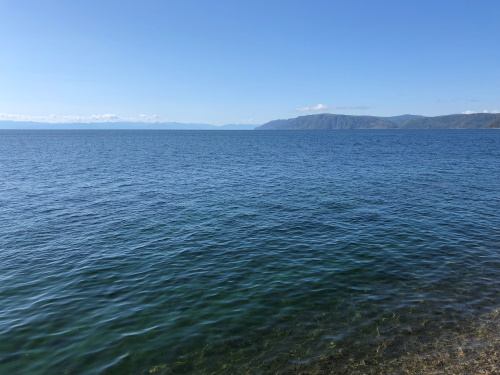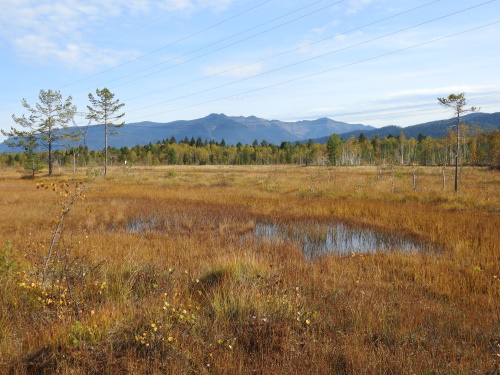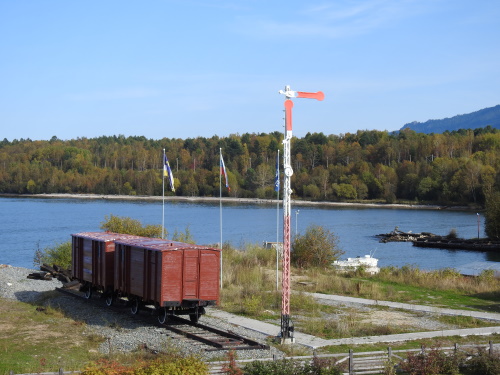Blog WHS Visits
WHS #723: Lake Baikal
There are dozens of ways to ‘do’ Lake Baikal. Previous reviewers already have highlighted the views from the Transsiberian Railway, its winter attractions and Olkhon Island. On my first day in the area I did the touristy thing by taking a ‘Raketa’ ferry from Irkutsk via the Angara River to Listvyanka, walking on the boulevard along the lake, eating fried omul in the recommended Proshly Vek restaurant and visiting the Baikal museum. I actually had wanted to take the ferry all the way to Bolshie Koty (an isolated village only accessible on foot or via the lake), but that would have meant another 5 hours of entertaining myself without access to food or obvious attractions, something I did not look forward to after just finishing a 49 hour train ride with the same characteristics.
For the main part of my visit though, I focused on 1 of the 5 nature reserves that surround the lake and are part of the huge core zone as well. I had booked a tour to the Baikalsky Nature Reserve near Tankhoy, which meant a drive along the south side of the lake for some 250km. The lake is fully surrounded by mountains, so our first look at it was after crossing a mountain pass. From a vantage point near a restaurant we did not only see the lake but also two railway tracks: one of them was the historic route around the lake and the other (the one higher up) the modern one. Next stop was Sable Mountain, a winter ski resort; here we took the chairlift up to get some more views. Ski tourism is promoted here to replace the local jobs that were lost after closing of the notorious paper factory in 2013.
After leaving the Irkutsk region, we arrived in the Republic of Buryatia. Near the town of Tankhoy we found the main destination of this day: the Bajkalski Biosphere Reserve. It encompasses various separate locations (all signposted from the main road). We first took a hiking trail of a few kilometers through the woods and a swamp area. It has information panels every few hundred meters in English too. This forest consists mainly of the Siberian pine. You also see many curved willows that have become crooked in winter due to the thick layers of snow. Siberian chipmunks live among the pines. The swamp area offers open views of the surrounding mountains, it is really beautiful here. There were only a few other hikers, some were picking berries - they are sold along the side of the road.
A few kilometers away lies another part of this nature reserve, a site with a large visitor center. In cages at the entrance 2 sable martens are kept: this local animal species in the past was much in demand because of its good quality fur. They are mainly nocturnal animals and even in captivity, they were difficult to find late in the afternoon. We finally found one of the two under a tree trunk – but I only saw its fur and one ear (here's a recent, better photo taken at the same spot). When at the visitor center, don’t miss the reconstructed old station building next to it. A very nice scale model has been made of how train traffic around Lake Baikal proceeded around 1900. The train went on a ferry at Port Baikal, was transferred across the lake and then came ashore here at Tankhoy.
Finally we went to the Baikal bird ringing station. We first had to pick up one of their volunteers and then drive 30 kilometers further east towards Ulan Ude. Via a dirt road full of holes and mud we reached the edge of Lake Baikal again. There is a historic bird ringing station there, where statistics about birds around Lake Baikal have been kept for decades. Volunteers are permanently at work to check the nets every hour for birds that have been caught. It is apparently a good spot as the Lake is too wide for small birds to cross, so they fly along its edges. We arrived a little after 5 o'clock and the yield of this hour was only moderate: one red-flanked blue tail. It was a small and somewhat stupid bird - 2 hours before it had also ended up in the nets and was counted (he already had a ring from being caught before). So we could not experience the real 'ringing' of the birds due to a lack of birds, but the volunteer explained well how everything works. We walked past some of the nets around the station to look for 'fresh' birds, but there were none.
Overall, my visit to Lake Baikal was a very satisfying one and the highlight of my Russia trip. There are so many interesting things to discover about this lake, its natural environment and its human history, that it continues to fascinate. You can certainly enjoy yourself there for a week and I wouldn't mind going back for a multi-day tour or long hike.
Els - 13 October 2019


